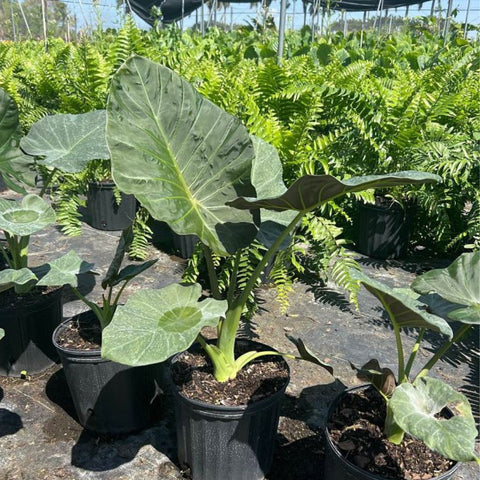Introduction
As the frost of winter fades and the blossoms of spring emerge, nature sets the stage for a season of growth and renewal. However, spring also brings its own set of unpredictable weather patterns. In a mere matter of hours, a serene, sunny day can devolve into a tempestuous storm. This variability in spring weather can pose challenges not only for outdoor enthusiasts but also for homeowners and community planners.
An inspiring tradition from Japan, hanami, invites people to appreciate the fleeting beauty of cherry blossoms as they bloom each spring. It serves as a reminder of nature's transient beauty and unpredictability. Just as no two sakura are alike, no two springs bring the same weather challenges, underscoring the need for preparedness. Whether you're an avid gardener, a caretaker of public spaces, or someone organizing a major outdoor event, being prepared for spring's whims is crucial.

Understanding Unpredictable Spring Weather
A. Characteristics of Spring Weather
Spring weather is characterized by its dynamic nature. As atmospheric patterns shift from winter's hold, they often result in a rapid succession of weather phenomena.
1. Sudden Temperature Changes
Spring can usher in drastic temperature fluctuations, sometimes shifting from warm to cold within a single day or night. This volatility can impact plant growth stages, confusing both flora and fauna that depend on stable conditions to thrive.
2. Frequent Thunderstorms
Thunderstorms are common in spring, bringing with them heavy rain, strong winds, and sometimes hail. These storms can be geographically widespread or intensely localized, with significant effects on soil erosion and water drainage, impacting urban and rural settings alike.
B. Why Spring Weather is So Variable
The transition period between the cold, dry air masses of winter and the warm, moist air of summer results in a collision course, creating instability in the atmosphere. This instability often triggers a variety of weather events, which are exacerbated by geographical factors such as mountains, large bodies of water, and varying elevation.
The Impact of Unpredictable Weather on Plants and Gardens
A. Temperature Fluctuations and Plant Stress
For plants, these temperature swings can induce stress, leading to wilting, slowed growth, and susceptibility to diseases.

B. Excessive Rain and Drainage Issues
Heavy rains can waterlog soil, suffocating roots while increasing susceptibility to root rot and fungi. Adequate drainage systems, whether in potted plants or garden beds, are crucial in mitigating these issues.
C. Wind Damage
Sudden gusts from thunderstorms can damage young plants and trees. A windbreak strategy, such as planting hardy shrubs or installing temporary protective barriers, can prevent such damage.
Best Practices for Preparing Your Garden
A. Selecting Hardy Plants
Opting for resilient plant species that can withstand varied conditions is a smart strategy. For instance, the Agave Blue is renowned for its hardiness and aesthetic appeal, thriving in diverse environments.
B. Implementing Effective Drainage Solutions
Enhanced drainage can be achieved by incorporating raised beds using well-draining soil or installing French drains to divert excess water. Proper slope management ensures that water flows away from the plant roots.
C. Utilizing Windbreaks and Shelters
Strategically placed windbreaks such as hedges, fences, or even small masonry walls can protect vulnerable plants. In addition, using protective tents or cloches during harsh weather provides temporary protection for tender species.

Innovative Tools and Techniques for Monitoring Weather
A. Weather Apps and Alert Systems
In today's digital age, mobile applications provide real-time weather updates, forecasts, and severe weather alerts. Apps like Weather Underground and NOAA Weather Radar provide interactive maps that help plan gardening activities around weather patterns.
B. Personal Weather Stations
For dedicated gardeners, investing in a personal weather station can provide hyper-local data on temperature, humidity, wind speed, and precipitation. This information is invaluable for making informed decisions on when to plant, water, or harvest.
C. Environmental Monitoring Devices
Emerging technologies such as soil moisture sensors and temperature probes give critical insights into micro-climates within the garden, ensuring optimal growing conditions are maintained despite external variances.
Enhance Your Spring with Plantology's Resilient Plant Selections
A. Select Diverse and Robust Tree Varieties
Adding trees to your garden can transform the landscape while providing natural weather barriers. Consider the elegant Adonidia Palm (Double), and bring both tropical elegance and resilience to your garden spaces.

B. Reliable Perennials and Succulents
Perennials offer stability and continuity across many seasons. The Agapanthus Lily of the Nile (Blue), for instance, delights with its long-lasting blooms and adapts easily to weather variations. For rockeries and dry areas, the Caribbean Agave provides a robust exclamation point, thriving with minimal maintenance.
Call to Action: Discover these and other durable plant options at Plantology. Start your spring with our selection of hardy plants designed to thrive in unpredictable conditions!
Maintaining Community Spaces during Spring's Variable Weather
A. Planning Public Green Spaces
Urban planners face unique challenges when planning community parks and public gardens due to unpredictable weather. Utilizing drought-resistant grass, incorporating native plants, and designing for optimal water drainage can create resilient public green spaces.
B. Educating the Community
Offering workshops and informational displays in communal areas can increase awareness of how to maintain personal gardens and public spaces during weather changes. Education programs can encourage community members to act responsibly in weather preparation.
C. Sustainable Urban Gardening Practices
Encouraging community participation in sustainable gardening practices can promote resilience. Practices such as composting, rainwater harvesting, and creating urban gardens contribute to sustainability while adjusting to weather variances.

Conclusion
Spring's unpredictable weather presents both challenges and opportunities for garden enthusiasts, community planners, and homeowners alike. By understanding the nature of spring weather, making informed plant selections, and utilizing modern technology, we can mitigate these challenges and enhance the beauty and productivity of our gardens.
At Plantology, we're committed to helping you embrace these opportunities. Explore our curated selection of resilient plants and technological solutions to ensure your garden thrives, no matter the season's surprises.
Call to Action: Visit Plantology today to explore our array of spring-ready plants and ensure your garden is prepared for whatever spring throws its way.
Diving Deeper into Spring Weather Patterns
The Role of Global Climate Change
While seasonal changes have always been a part of Earth's natural cycles, climate change is amplifying these fluctuations, making spring weather even more unpredictable than in past decades. Warmer global temperatures influence polar ice melting and sea levels, affecting the atmospheric currents that drive shifts in weather patterns. This disrupts traditional weather expectations, resulting in prolonged cold spells or sweltering warm fronts.
The Influence of Local Geography
Each region faces its own unique meteorological challenges based on its geographic location. Coastal areas might experience sudden fogs that envelop cities, disrupting transportation. Meanwhile, mountainous regions could see sudden snowfalls resulting in avalanches or flash flooding as snow rapidly melts under unexpected warm fronts. Understanding local geographical factors helps in creating region-specific strategies for dealing with spring weather anomalies.

Case Studies: Lessons from Various Regions
Spring Preparedness in Northern Europe
Northern Europe, known for its harsh winters, transitions dramatically into spring with unpredictable storms and temperature spikes. Denmark, for example, implements comprehensive weather monitoring systems to mitigate agricultural risks. Weather stations provide real-time data to farmers, helping them optimize planting schedules. Moreover, community-led initiatives focus on strengthening infrastructure, like ensuring that bridges and roads can withstand sudden frosts and ice.
Adaptive Strategies in North America
In the United States, regions like the Midwest confront frequent tornadoes in spring. States such as Oklahoma and Kansas promote community preparedness through regular tornado drills and robust building codes designed to withstand severe weather. Programs funded by the Federal Emergency Management Agency (FEMA) provide resources for homeowners to construct safe rooms, offering crucial protection during severe storms.
Innovation in Agricultural Planning: Australia
Australia's spring is marked by its dry conditions; hence water conservation is paramount. Initiatives such as the use of drought-resistant crop varieties and drip irrigation systems, designed to minimize water use while maximizing yields, have been successful. The Australian Bureau of Meteorology provides farmers with seasonal forecasts, aiding in strategic decision-making to tackle erratic weather.

Advanced Technologies for Coping with Spring Weather
The Rise of AI and Predictive Analytics
Artificial intelligence and predictive analytics play an increasingly vital role in forecasting weather patterns with greater accuracy and lead times. Machine learning models analyze extensive datasets from satellite imagery, historical weather trends, and real-time meteorological data to predict specific weather events, enabling proactive measures for gardeners and city planners alike.
The Internet of Things (IoT) in Smart Gardening
IoT technology is revolutionizing garden management. Smart systems can regulate irrigation based on real-time soil moisture data, ensuring optimal plant hydration while conserving water. These systems can also be integrated with weather forecasts to automate protection measures for plants during severe weather events, engaging covers or shelters as needed.
Sustainable Practices through Green Technology
Green technology promotes ecological balance and sustainability. Solar-powered weather stations reduce reliance on non-renewable energy sources, while vertical gardens and green roofs contribute to urban cooling, mitigating heat island effects. These innovations are not only environmentally friendly but also help communities adapt to and mitigate the impacts of volatile spring weather.
Community Outreach and Education Initiatives
Engaging Communities through Workshops
Local governments and gardening clubs can host workshops to educate citizens on preparing for spring weather. These workshops can cover topics such as weather-proof garden design, plant selection suited to local climate conditions, and emergency preparedness strategies both for home landscapes and community gardens.

Developing Educational Curriculum
Introducing weather education into school curriculums encourages younger generations to engage with environmental challenges early. Hands-on projects like school gardens or weather monitoring activities can cultivate a sense of responsibility, fostering a generation equipped to address future climate variability.
Technology's Role in Community Engagement
Social media platforms and community websites can disseminate timely information regarding upcoming weather changes and preparedness tips. Interactive online tools allow residents to report local weather conditions, creating a more nuanced picture of micro-climates which supports both communal and individual action plans.
The Future of Gardening and Urban Planting
Exploring Genetic Modification for Resilience
Genetic engineering holds the potential to develop plant varieties better suited to withstand erratic weather conditions. Research and development in this field could lead to breakthroughs in drought resistance, enhanced growth rates, and improved resilience to temperature changes and pests.
Concepts in Ecological Urban Design
Future urban landscapes are being redesigned to incorporate more green spaces that function as natural buffers against extreme weather. Concepts like urban forestry and rooftop gardens don't just beautify cities but also contribute significantly to reducing flood risks, enhancing biodiversity, and improving air quality.

The Global Movement towards Ethical Gardening
As awareness regarding the environment increases, ethical gardening practices are gaining momentum. These include the use of organic fertilizers, native plants that support local ecosystems, and horticultural techniques that prioritize sustainability over aesthetics. As our understanding of ecological balance deepens, these practices will likely become essential to any gardening endeavor.
Conclusion: Embracing Spring's Challenges as Opportunities
While spring's unpredictable weather presents challenges, it also offers numerous opportunities for innovation and adaptation. By embracing sustainable practices, leveraging advanced technologies, and fostering community initiatives, we can not only mitigate the risks associated with spring weather but also enhance our gardens, public spaces, and communities.
At Plantology, our mission is to support your journey through spring's trials and triumphs with our resilient plant selections and cutting-edge solutions. We invite you to explore our products and join a growing community of nature enthusiasts dedicated to thriving in harmony with our planet's ever-changing climate.

Call to Action: Take the next step in creating a garden that is as resilient and inspiring as you are. Visit Plantology today to discover the possibilities!






























Comments (0)
There are no comments for this article. Be the first one to leave a message!